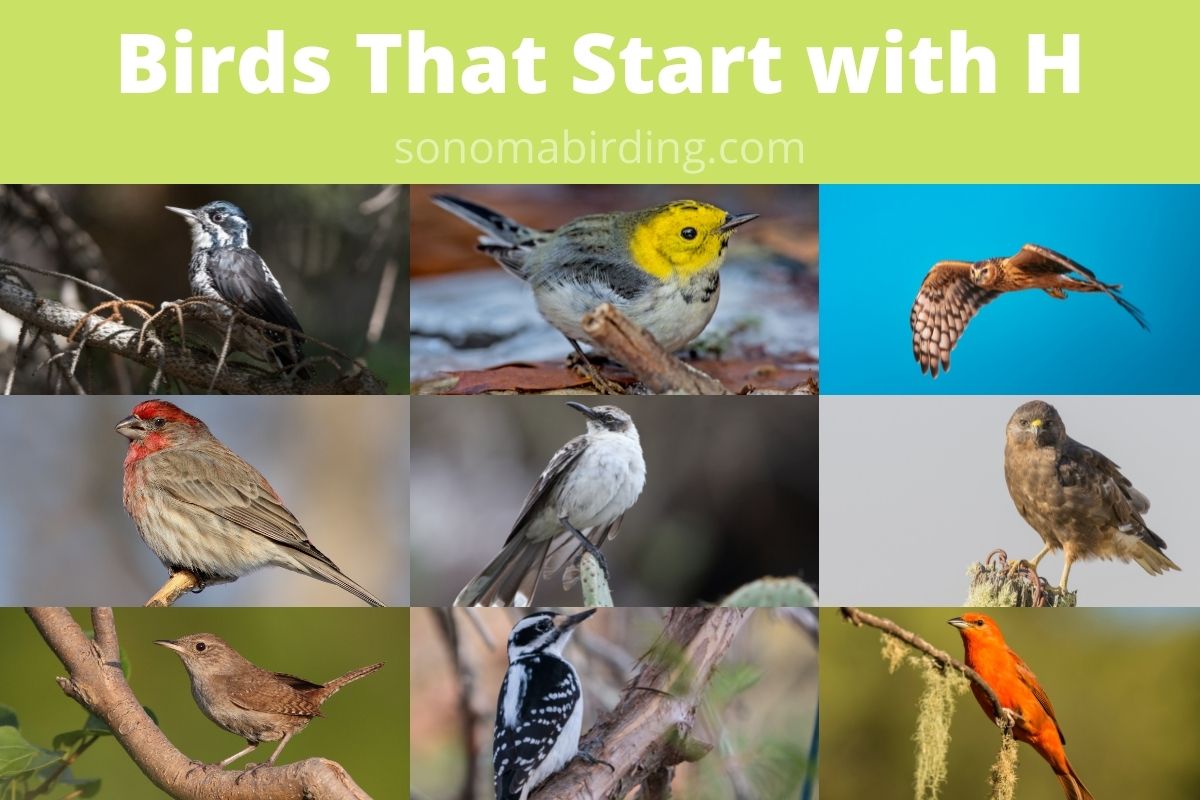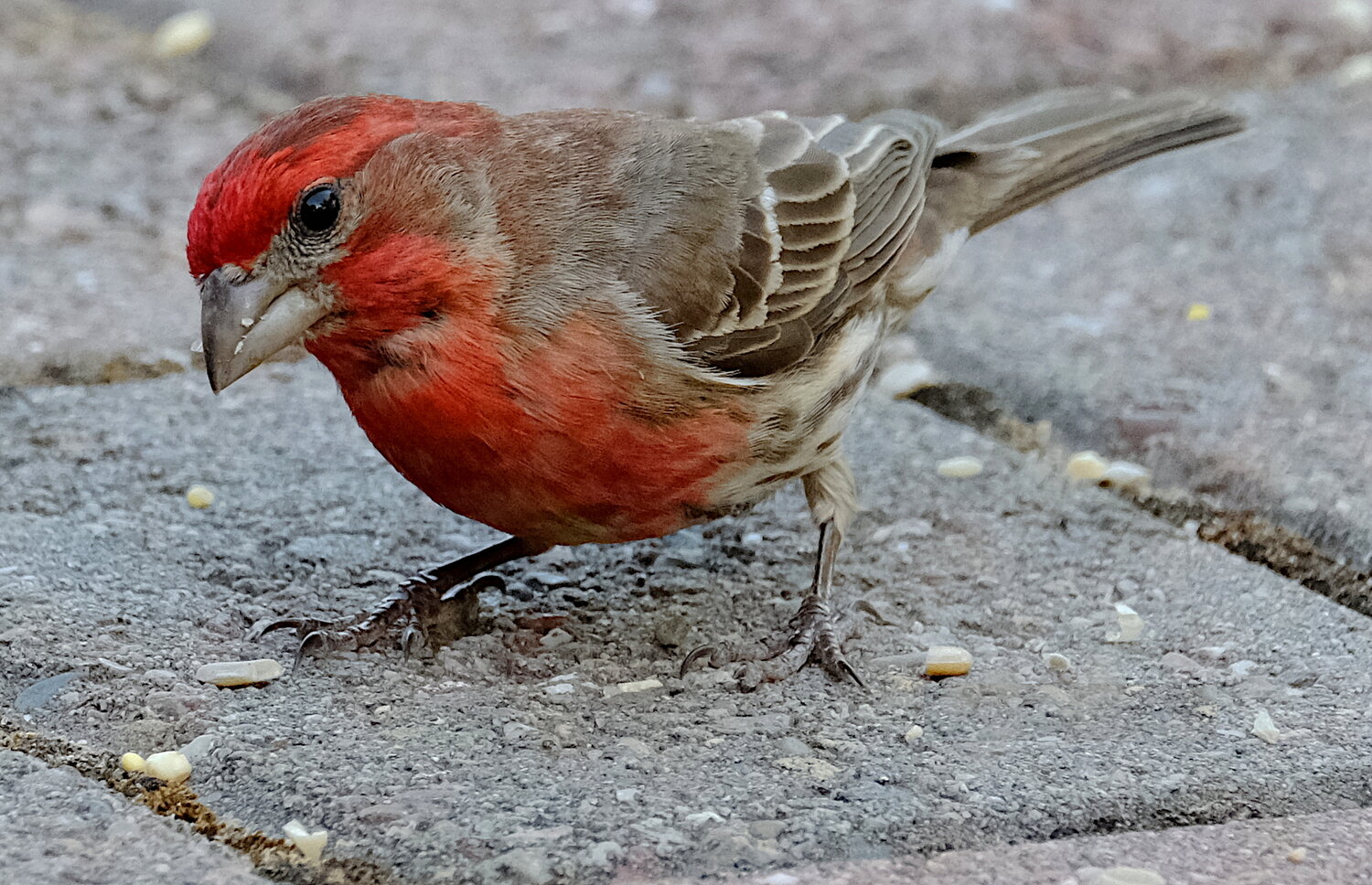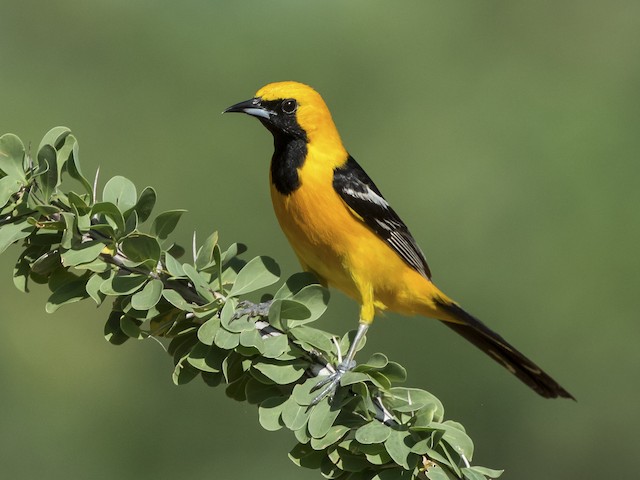What do you think of when someone says ‘birds’? There are so many types of birds to think about. You probably even have some pictures in mind if you tried to answer it. But what would your response be if someone asked you about birds that start with the letter H?
There are a number of things we can learn from birds — how to fly, how to wear incredibly colorful and dapper outfits — but the most important lesson birds teach us is that we should strive every day to do, be, and travel as much as we possibly can. So for this blog post, we’re going to take a look at those feathered friends, those birds who grace us with their presence and who “get around” more than any other type of creature on Earth: Birds that start with H.
Hairy Woodpecker (Leuconotopicus villosus)
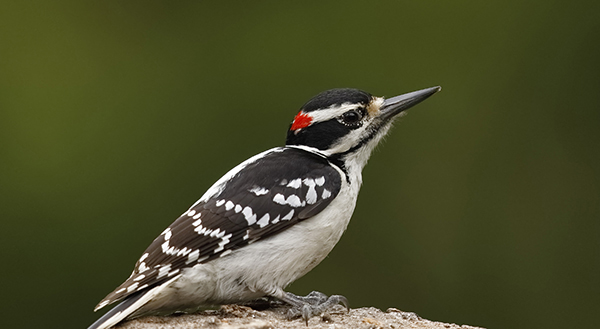
Inhabiting the mature deciduous forests, the Hairy Woodpeckers are medium-sized woodpecker species that have an abundant population throughout North America.
Although these woodpeckers are resident species, you can find their northernmost population traveling south during extreme winters.
In their plumage, Hairy Woodpeckers look exactly the same as Downy Woodpeckers, only larger. They have a mainly black and white body, with white underparts and black streaks running along their face. Their wings are also black, with several white spots scattered on them.
Both sexes of adults appear similar to each other, save for a red head patch. This patch can only be seen in the males and not in their female counterparts.
Harlequin Duck (Histrionicus histrionicus)

Harlequin Ducks are a small sea duck species found in North America, eastern Russia, Iceland, and Greenland. These ducks are named after the colorful appearance of their males, bearing similarities to the character of Harlequin.
Harlequin Ducks are also known by many names, such as “Rock Duck,” “Blue Streak,” “Squeaker,” “White-eyed Diver,” and so on. In North America, people use the fancy name of “Lords and Ladies” for them.
The adult Harlequin Ducks display a significant sexual dimorphism. The males have a very complex plumage, particularly during the breeding season. They have a slaty-blue head and neck with white crescents on their face.
The rest of their body is covered in shades of grey, blue, and chestnut.
In contrast, the females have a dull, brownish plumage with several buff patches on their faces and dark edges to their wings.
Harris’s Hawk (Parabuteo unicinctus)

Popular in the world of falconry, the Harris’s Hawks are moderately-sized hawk species found all over the Americas. A large population of these raptors is also spotted in the western regions of Europe at times.
Harris’s Hawks have been named after the American naturalist Edward Harris. They’re also known by other names, including “Dusky Hawk” and “Bay-winged Hawk.”
These hawks are monochromatic, both among the sexes and in subspecies (3 subspecies occur). They have a considerably darker plumage than most hawks within their range. Their head and back are colored in chocolate brown, with a rufous touch on their wings. Lastly, their tail feathers are outlined with white.
While Harris’s Hawks survive 10-12 years in the wild, they can live up to 25 years in captivity.
House Finch (Haemorhous mexicanus)
Native to the western regions of North America, the House Finches are medium-sized birds belonging to the finch family. These birds are quite popular within their range for their cheery chirps and warbles.
Because House Finches have fully adapted to living alongside humans, these birds primarily reside in the urban and suburban areas.
House Finches have a small body with a long, square-tipped tail. Their plumage is dull brown in color, with white streaking all over. On their wings, you can see touches of grey.
The males have a reddish touch on their head and breast, which is absent in their female counterparts. It is often used as a major field identification mark between the sexes.
Harpy Eagle (Harpia harpyja)
Ranked among the largest and most powerful eagle species globally, the Harpy Eagles are raptors found throughout Central and South America. In North America, you can only spot them in Mexico.
Harpy Eagles are also known by other names, including “American Harpy Eagle” and “Brazilian Harpy Eagle.” The citizens of Brazil also call these birds “Royal-hawk.”
Harpy Eagles have a pale grey head with a double crest atop it, while the rest of their upper body is of a dark, slaty-black color. The color of their back extends to their throat; in contrast, their belly and rump are stark white.
The plumage of both adult sexes is identical, but the females far surpass their male counterparts in size.
Hooded Crow (Corvus cornix)

Also referred to as the “Scotch Crow” or “Danish Crow,” the Hooded Crows are another widespread member of the corvid family found throughout northern and eastern parts of Europe. These crows have four subspecies, all of them display slightly varying plumage.
In both appearance and behavior, Hooded Crows share many similarities with the Carrion Crows.
They have an ash-grey body with a dark black head, lending them a hooded appearance. Their wings, tails, bill, and legs are also black, with a black throat patch extending from the hood.
While the adult sexes appear identical, the males are generally the larger ones.
Hook-billed Kite (Chondrohierax uncinatus)
Belonging to the Accipiter group of raptors, the Hook-billed Kites are a slender-bodied kite species that have an abundant distribution throughout the Americas.
These birds have a dark appearance, a dark head cap on the otherwise white face, and a dark upper body and underparts. In contrast, their wings have white undersides, with white bands on their tail.
Hook-billed Kites primarily feed on tree snails, with amphibians like salamanders, frogs, and insects constituting their secondary diet.
Hepatic Tanager (Piranga flava)
Named after the liver-colored plumage of the males, the Hepatic Tanagers are an American songbird species. Within the United States, you can find these little birdies in the southwestern regions.
As their name suggests, Hepatic Tanagers were initially placed in the tanager family but are now members of the cardinal family.
These birds display a significant sexual dimorphism. The males are colored in a bright, brick-red shade, brightest on their face. They have black eyes with a grey bill, legs, wing bars.
On the other hand, their female counterparts have a rather dull, olive-green plumage.
House Sparrow (Passer domesticus)
The House Sparrows are small passerines that are well-adapted to live alongside human settlements and have an abundant population in urban and rural landscapes. These birds have over 12 recognized subspecies.
House Sparrows have a small but stocky body, with a rounded head, stout bill, and broad chest. They display dimorphism in both size and plumage.
Female House Sparrows are smaller in size than their male counterparts and have a duller plumage. The males have more grey in their plumage than brown, while females contain more brown.
Hooded Merganser (Lophodytes cucullatus)

Being the only living member of their genus, the Hooded Mergansers are a merganser species found in North America. These waterfowls also happen to be the only merganser species that are found only within their native range.
Hooded Mergansers are not a fully migratory species, but some of their northern populations do travel south during chilly winters.
The adult sexes of Hooded Mersangers are significantly sexually dimorphic. While both sexes appear similarly in the non-breeding seasons, during breeding seasons, the males look distinguished.
The breeding males have a black head, neck, and back, with a bold white cheek patch. They have a white breast and chestnut rump on the underside, with several black lines running across.
On the other hand, in the non-breeding months, these ducks have a dull greyish brown body with a prominent reddish crest resting on their heads.
House Wren (Troglodytes aedon)
/mi-carolina-wren-65edc603516d43edb091c53f6c80b9fe.jpg)
House Wrens are tiny wren species that are endemic to the Americas. While these birds have a widespread population throughout South America, within North America, they occur only in Canada.
House Wrens have several subspecies that vary greatly in coloration. The upper parts of the nominate species are colored in a rich rufous-brown, with buff-colored undersides and dark barring on their wings and tail.
The House Wrens produce a rich, bubbly song that pleases all the birders during their nesting season. However, you would rarely listen to these songs outside of their breeding months.
Hooded Oriole (Icterus cucullatus)
Named after the black hood of the males, the Hooded Orioles are icterids found all over the United States. These birds have five different subspecies, all of which are found within the United States.
Hooded Orioles have a varied diet that includes insects, fruits, berries, and nectar. They’re acrobatic feeders and can be seen hanging upside down on the hummingbird feeders, trying to drink nectar.
The adult Hooded Orioles display sexual dimorphism. The males have an orange head and underparts, with a characteristic black hood. Their wings and tail are black, with white wing bars.
On the other hand, their female counterparts have an overall olive-green body with grey touches on their wing and a yellow breast patch.
Hudsonian Whimbrel (Numenius hudsonicus)
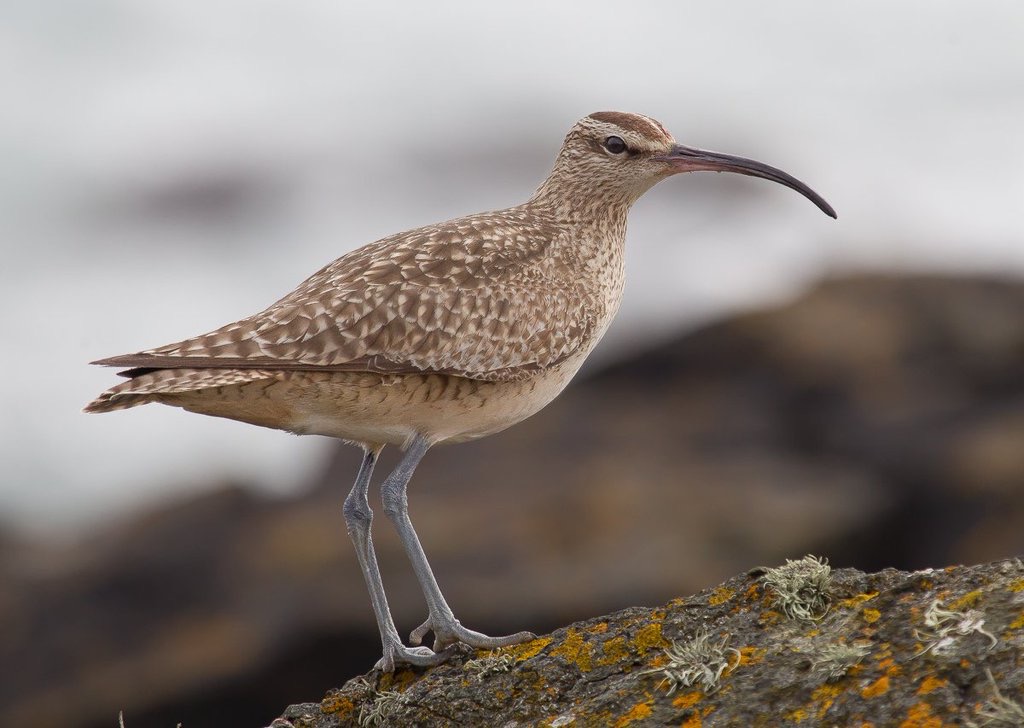
The Hudsonian Whimbrels are large wading birds that have a widespread population throughout North America.
These curlews are migratory, inhabiting the arctic regions of North America during the summer and spring months. However, in winters, you’ll find them on the coasts of South America.
Hudsonian Whimbrels have dull greyish-brown plumage, with three dark streaks running across their head. Both sexes appear similar and have a long, curving bill, although the females’ bills are longer.
Because these birds inhabit coastal areas, their diet mainly consists of small crabs and other aquatic invertebrates.
Hawaiian Hawk (Buteo solitarius)

As their name suggests, the Hawaiian Hawks are one of the two raptor species native to Hawaii, with the other one being Hawaiian Short-eared Owls.
The IUCN lists these hawks as Near Threatened Species; their population is under the threat of vehicle collisions and illegal shootings.
Hawaiian Hawks occur in two morphs, a dark one consisting of dark brown and a light one of grey. Out of these, the light morphs are more popular. They have a dark grey head and upper parts, with white undersides and dark spotting on the chest.
Both sexes of the adult Hawaiian Hawks harbor identical plumage; only the females are heavier than their male counterparts.
Hooded Vulture (Necrosyrtes monachus)

Belonging to the Old World Vulture family, the Hooded Vultures are a raptor species that are found all over Africa. The population of these vultures is declared to be Critically Endangered by the IUCN.
Hooded Vultures have an overall dull brown plumage with a pinkish-white face that could red when they’re agitated. They have broad wings and a short tail that helps them in soaring.
The adult Hooded Vultures display negligible sexual dimorphism. Both sexes are identical in plumage; only the females have longer eyelashes.
Hardhead (Aythya australis)

Most people believe that Hardheads have been named due to their tough skull but because their brain processing is still difficult for the ornithologists to comprehend.
Hardheads are found all over Australia, where they inhabit lakes, rivers, and swamps. Although they’re not migratory, they do have nomadic tendencies and disperse long distances in case of droughts.
Among the ducks, these birds are fairly small in size and have chocolate brown bodies. However, adult males have a much darker head than their female counterparts, which is used as a major field identification mark.
Hen Harrier (Circus cyaneus)
Named after their tendency of preying on fowls, the Hen Harriers are a bird of prey species that breed all over Eurasia. Their preferred habitats include marshes, grasslands, prairies, swamps, and farmlands.
Just like the other harrier species, both sexes of the Hen Harriers have different plumage. The males have grey plumage, while their female counterparts have brown bodies.
Hen Harriers are carnivores and mainly feed on small mammals and fowls. However, they will hunt on other birds occasionally as well.
Hood Mockingbird (Mimus macdonaldi)
The Hood Mockingbirds are a small mimid species found in South America and the Galapagos Islands. Due to their nativity to the Espanola Islands of the Galapagos, these birds are also referred to as “Espanola Mockingbirds.”
The IUCN lists Hood Mockingbirds as a Vulnerable Species, with adverse weather conditions being a major threat to their population.
In appearance, these mockingbirds are not very different from the other Galapagos Mockingbird species and have a mottled grey body. They also have a thin, pointed bill, long legs, and a long tail.
Hill Pigeon (Columba rupestris)

Primarily inhabiting countries of the Eurasian subcontinents, including China, Korea, Nepal, India, and Mongolia, the Hill Pigeons are Asian pigeons with two subspecies.
These pigeons are known by several other names, such as “Eastern Rock Dove” and “Turkestan Hill Dove.”
Hill Pigeons have a stout body with a dark grey head and lighter underbody. Their wings have black markings on them. Both sexes of these birds appear similar.
Heermann’s Gull (Larus heermanni)

Named after the 19th-century naturalist Adolphus Heermann, the Heermann’s Gulls are North American seabirds that have a Near Threatened population.
Heermann’s Gulls appear quite different from all the other gulls you might have seen. These birds are not sexually dimorphic but have different breeding and non-breeding plumage.
During breeding seasons, they have a white head, medium-grey upper body, and darker wings and tail. However, outside of it, their head develops a mottled grey color.
Hook-billed Kingfisher (Melidora macrorrhina)
Named after their extraordinarily shaped hook, the Hook-billed Kingfishers are an Australian kingfisher species that primarily inhabit the lowland forests.
Hook-billed Kingfishers are among the larger kingfisher species and have a rather dumpy body. Their heads, back, and upper body, with pale white undersides and yellow legs. The main diet of these birds consists of frogs and a variety of insects.
Hermit Warbler (Setophaga occidentalis)

Belonging to the wood-warbler family, the Hermit Warblers are a migratory warbler species that breed in North America and migrate to Central America during winters.
Hermit Warblers have a bright yellow head, while the rest of their body is dark grey in contrast. On their throats, they have a black patch, wing similar wing bars on their back. The underparts are pale grey.
Hooded Grosbeak (Hesperiphona abeillei)
Endemic to Guatemala and Mexico, the Hooded Grosbeaks are a Central American finch species that inhabit highland forests.
Hooded Grosbeaks have a characteristic black hood on their head, with the rest of their body being bright yellow. The females have similar but slightly duller plumage. Their black caps are also smaller than the males.
Hammond’s Flycatcher (Empidonax hammondii)
Named to commemorate William Alexander Hammond, the Hammond’s Flycatchers are a migratory species inhabiting North and Central America.
Hammond’s Flycatchers have a small, grey body, with a darker touch on their head, dark wing bars, and pale grey undersides. Their bill is used to distinguish between the sexes; the males have a long, thin bill, while their female counterparts have a shorter and wider bill.
House Crow (Corvus splendens)

Also referred to as “Colombo Crow” and “Ceylon Crow,” the House Crows are an Asian corvid species with a widespread population within their range.
House Crows have a medium-sized, slender body with a grey head, back, and undersides, with black eyes, bill, wings, tail, and legs. Both sexes appear and are sexually monomorphic.
Helmeted Guineafowl (Numida meleagris)

Being the monotypic members of their genus, the Helmeted Guineafowls are African guineafowl species named after their characteristic vibrant blue head. In the United States, Europe, West Indies, and Australia, these fowls are an introduced species.
Helmeted Guineafowls have round bodies with relatively small heads. Their plumage is greyish-black plumage, covered with white spackles. Only their head is a metallic blue in color.
They have a red crest upon their head, which extends to their bill as a frontal shield.
Conclusion: Birds That Start With H
Thank you for reading this article on birds that start with the letter H. Hopefully your knowledge of birds has increased significantly.
Birds are an amazing example of how intricate nature can be, and how each species has traits, abilities, and mechanisms to survive. Here at Sonoma Birding, we believe that nature is something to be admired and enjoyed.
Check out our collection of articles on the blog for more fascinating topics to read about!
Birds By Alphabet (A-Z List)
Birds that Start with A
Birds that Start with B
Birds that Start with C
Birds that Start with D
Birds that Start with E
Birds that Start with F
Birds that Start with G
Birds that Start with H
Birds that Start with I
Birds that Start with J
Birds that Start with K
Birds that Start with L
Birds that Start with M
Birds that Start with N
Birds that Start with O
Birds that Start with P
Birds that Start with Q
Birds that Start with R
Birds that Start with S
Birds that Start with T
Birds that Start with U
Birds that Start with V
Birds that Start with W
Birds that Start with X
Birds that Start with Y
Birds that Start with Z

